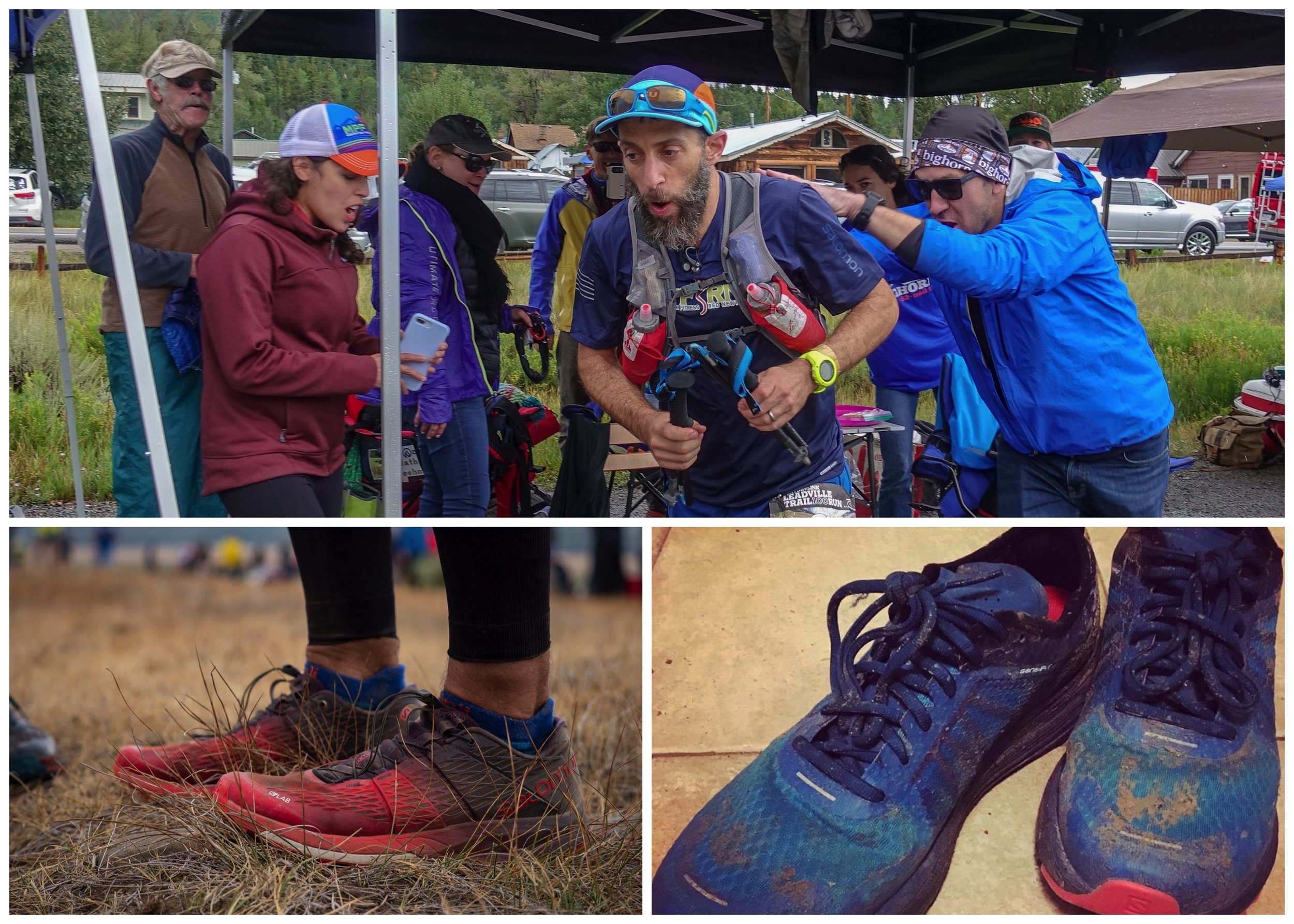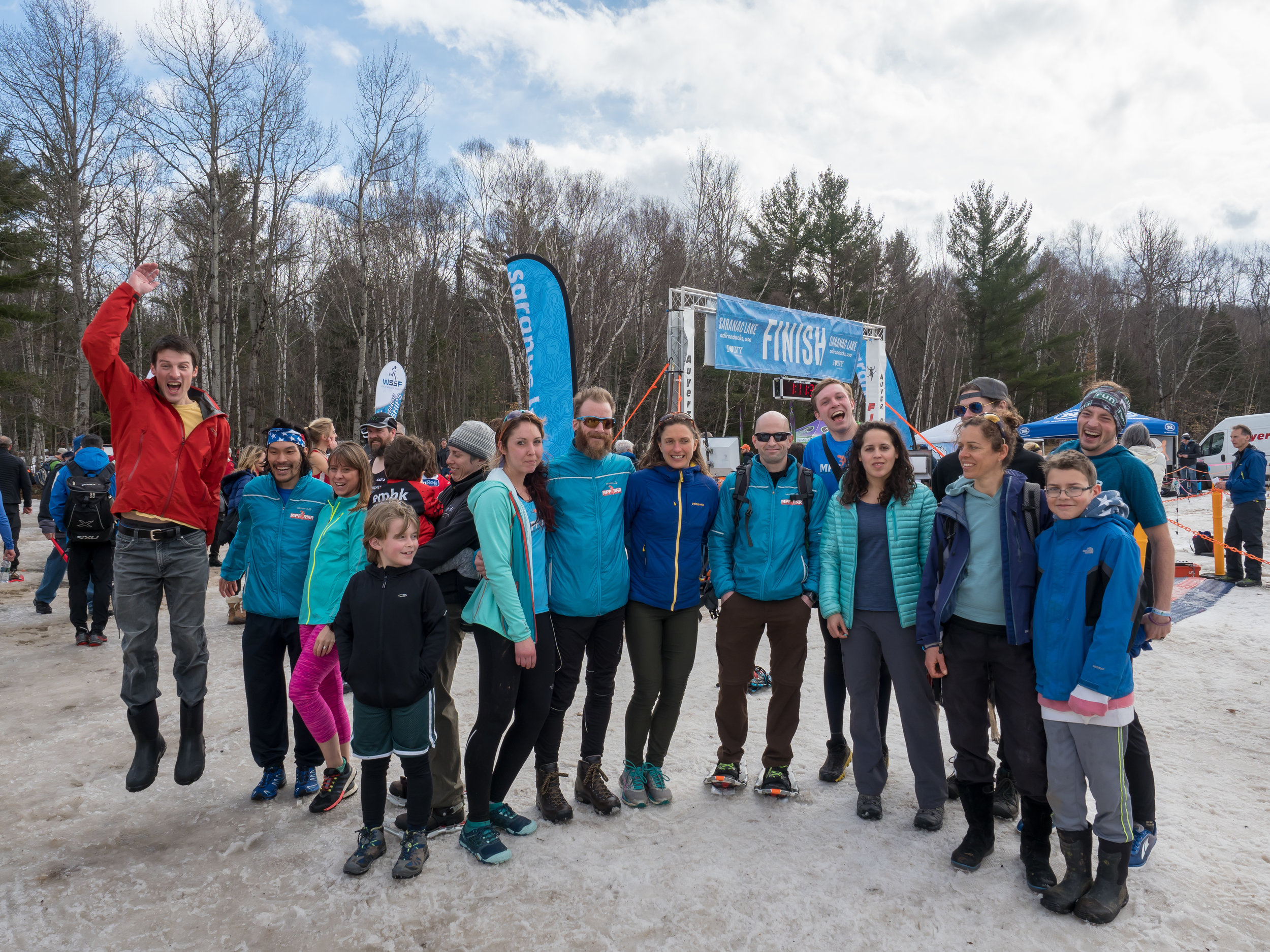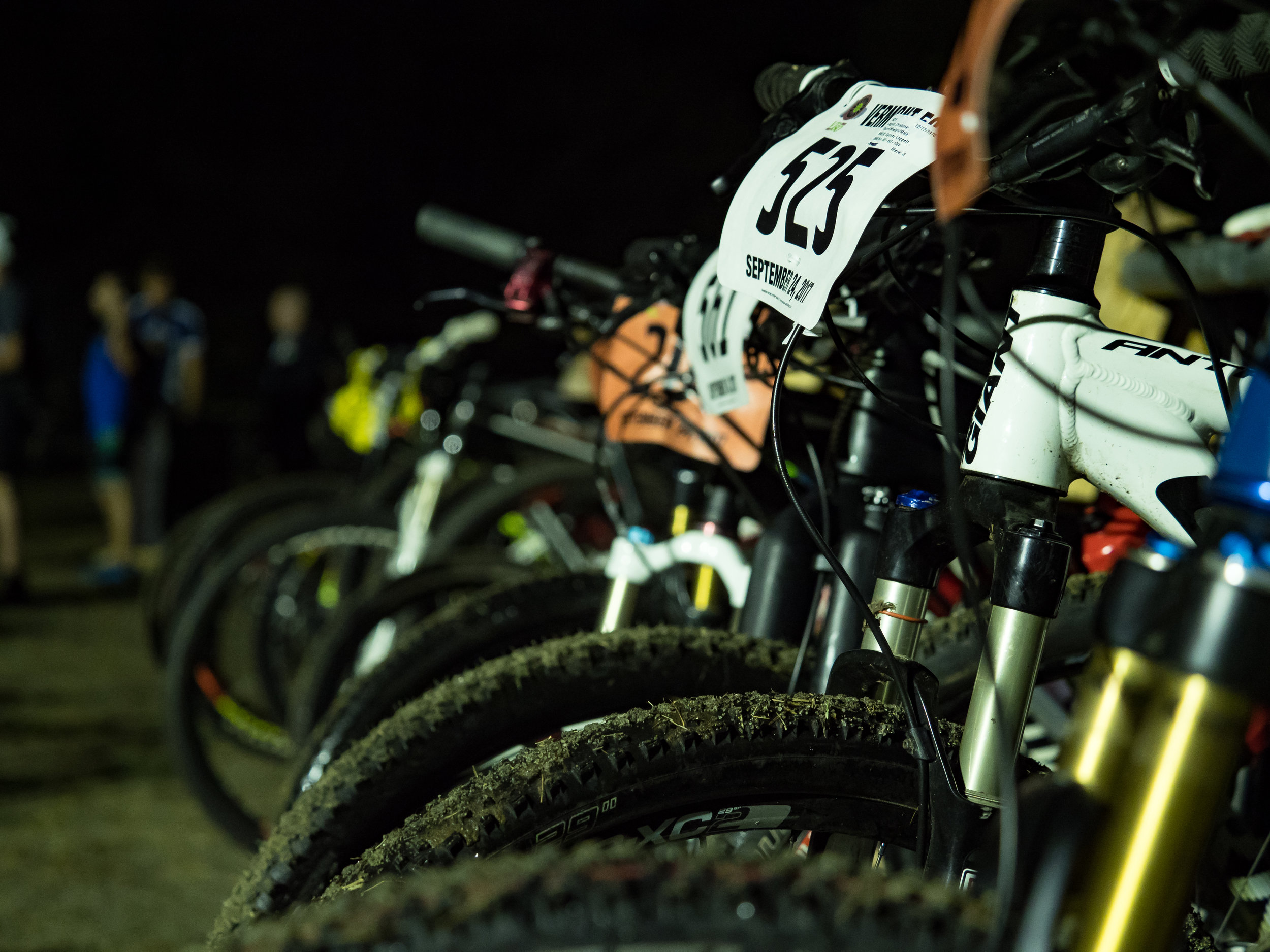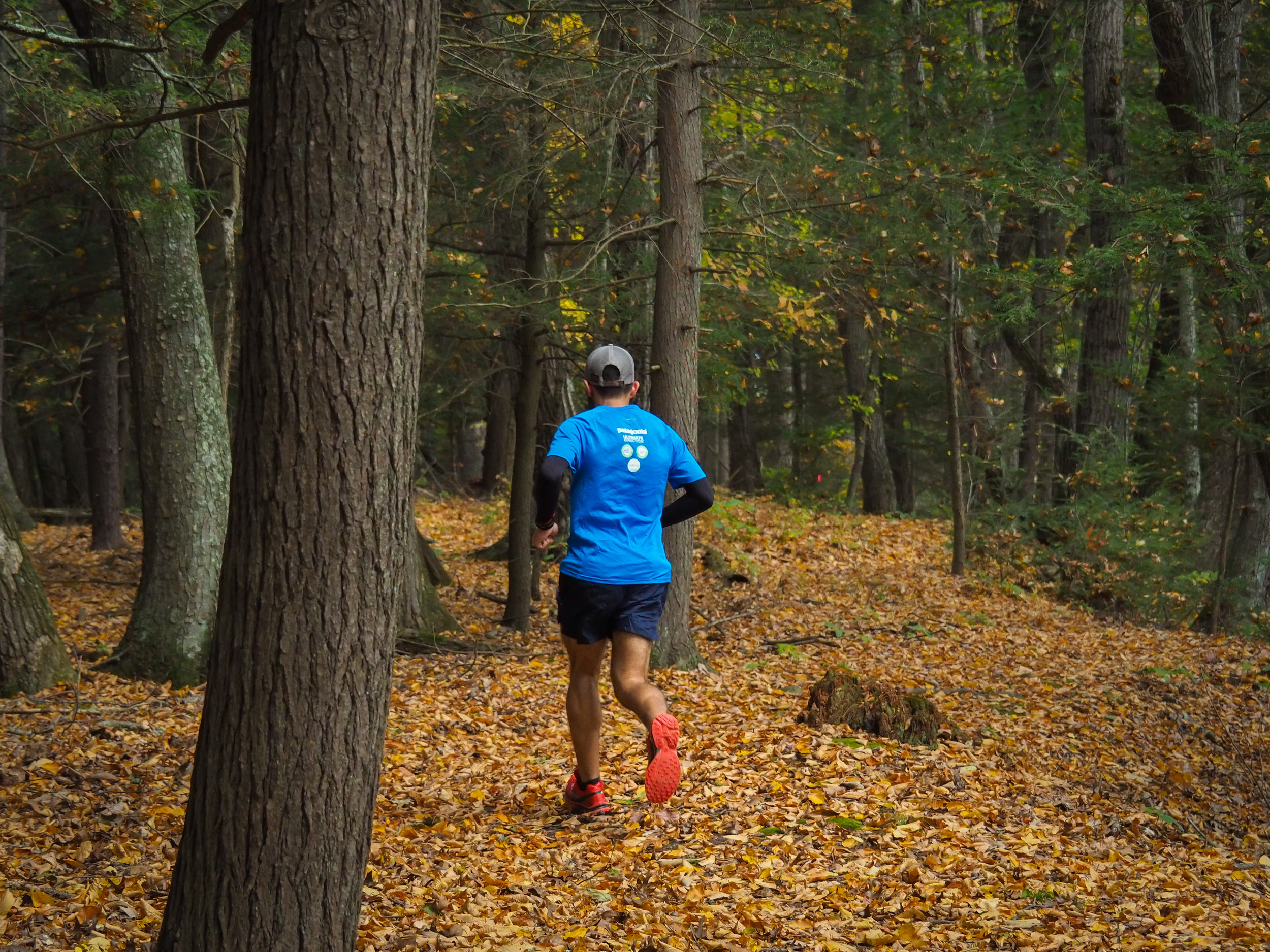Mount Mitchell Challenge "The Paralysis of Indecision" by MPF RNR Athlete Jason Friedman
Long considered of the toughest races in the country, the Mount Mitchell Challenge presents runners with obstacles before even reaching the starting line--and I'm not referring to the September entry lottery, which fills the race to capacity on the day it opens. The unpredictable and ever-changing course conditions tend to destroy the best laid pre-race plans. Many of us associate North Carolina with Tobacco Road and year-round warmth, but western North Carolina is without a doubt mountain country, and February in Black Mountain can be as harsh as winter in the northeast. Deciding what to wear and what to carry for a 40-mile mountain race with 9000' of elevation change in the heart of winter presents unique difficulties, even in a good year.
This was not a good year.
The ten days that preceded our trip down to NC this year--my third try at this race, after finishing fifth in 2011 and sixth (fifth male) in 2014--was filled with a whirlwind of texts between myself and the four friends I'd be heading down with, most of them variations on the theme "Do you believe this fucking weather?" Reports from the course painted a picture of a mix of snow and ice, with high temps in the 20s-30s. Race director Jay Curwen, who usually downplays any sort of reports as hyperbole, was warning us that traction devices would be necessary; coming from him, this was a shocking admission. By Tuesday before the race, it became clear that the alternate "snow route" above the Blue Ridge Parkway would be utilized, shortening the course by about 2-3 miles and making the latter stages of the summit ascent a road race--albeit at a 7% uphill grade. Thursday brought another 4-6" of snow to the course. I packed two large duffel bags with clothing, four pairs of shoes, two different hydration vests, Nanospikes, and Microspikes. I was about to pack a pair of Dion snowshoes before I decided that if it was going to turn into a 40-mile snowshoe race, I'd simply skip the race and drink a whole bunch of beer.
Upon reaching Black Mountain on Friday afternoon, I drove out to Montreat, where the course leaves the pavement after the first few miles and enters the trails. After a short scouting run with different devices, I decided on the Microspikes, which would provide the most traction in the several inches of loose, unpacked snow that was covering the course; I planned to carry them until the trailhead, then to strip them off again after the trail for the run to the summit on the Parkway and the summit access road, and use them again for the descent back down to Montreat. At the pre-race meeting that night, though, Jay reported black ice on the summit roadway. Now worried that I'd need traction for the roads as well, I started to think Nanospikes might be the way to go; they'd be more versatile, I could run with them on pavement if necessary (unlike the Microspikes), and they would provide some help on the snowy trails as well. The agonizing over this and many other gear decisions--long sleeve shirt or arm sleeves? Cap or winter beanie? Regular trail shoes or gaiters? Handheld bottle or vest?--occupied our conversations, not only for several hours that evening, but even at breakfast on race morning. We sounded like a bunch of fifteen-year-old girls getting ready for prom. Having myriad options didn't help; in fact, it simply left me feeling much more vulnerable to second-guessing myself.
The weather seemed reasonable, though: high 20's at the start, little wind, no rain. I was actually pretty comfortable as we gathered on Cherry Street for the start. I had felt a little sluggish the day before, but our short jog to the start told me that I was primed and ready to go. Training had gone very well. I had a six-week, 600-mile block behind me, with tons of hills and several strong tempo workouts mixed in; after switching up my diet in early January, I was at my lightest weight in fifteen years. I knew the field was as strong as I had ever faced at Mitchell, but I couldn't wait to get going.
The opening pace was suicidally fast. Several people fairly sprinted off the line, as if starting a 5K. The marathon division has become more competitive in recent years, and this has contributed to some fairly insane starts for those of us in the 40-mile division. In 2011, I ran in the lead pack for most of the first 15 miles; of the first ten people to reach the marathon turnaround on the Parkway that year, only one of them was actually a marathoner. This year, however, several of the marathoners came to hammer, and they strung out the rest of the 40-milers as well. I found myself exactly where I wanted to be pre-race: running with Shaun Pope (the Challenge runner-up in 2014 and this year's favorite) and Matt Roane (the 2014 marathon winner), though our small pack of about six runners was not at the front of the field but back in about seventh, over a minute behind the leaders by the time we reached the two-mile mark in Montreat. Our pace was fairly aggressive, though, and we were banking on some carnage among the fast starters later in the race. We were right, kind of; five of the top eight finishers came out of our group, although Daniel Hamilton, the race winner, was one of the guys off the front who managed to hold on.
Coming downhill, trying to find that rhythm
Photo: Asheville Citizen-Times
After a very gradually uphill first couple of miles, the race climbs steeply for about 3/4 of a mile on pavement before entering the trail; I powered smoothly up this section, leading our group and feeling great. I stopped at the trailhead to slip on my Nanospikes, losing about thirty seconds. As soon as I stepped onto the trail I regretted my decision to leave the Microspikes back in my room. The snow was mushy and loose; the Nanos offered minimal traction, and I was sliding all over the place. I hemorrhaged time and places, giving up three additional spots within the first mile on trail. I had already lost track of how many people were ahead of me--10? 15? My legs felt great, but I was running in quicksand; it felt like every race anxiety dream I've ever had.
By the time we reached the first aid station at Sourwood Gap, about an hour into the race, I had all but given up. Beyond this point, the conditions improved a bit; the trail had been traversed by snowmobiles and ATVs at this point, and so was somewhat packed, allowing for stretches of decent running, but never for more than a few minutes at a time. I stopped losing spots, but I wasn't making up any ground either; instead, I was in a back-and-forth with an unknown runner for a place in the mid-teens. I was awash in negative self-talk, mostly directed at myself for, after all that agonizing, making the wrong decision on my traction device, which was clearly costing me minutes. My only saving grace was that I still felt good, and that I knew an 11-mile stretch of pavement--when traction devices would hopefully be irrelevant--was approaching.
I reached the Parkway after a very frustrating 2 hours and 10 minutes--ten minutes slower than ideal conditions in 2014, when I had felt like shit; and nearly twenty minutes behind my opening pace in 2011. I dug out a GU Roctane with my frozen fingers and gulped it down, vaguely registering that this was the first nutrition I had taken since breakfast. I started up the access road with my Nanos still in place but ditched them after about a mile; the road was pristine, without an icy patch to be seen. I was all alone, but periodically caught glimpses of Matt Roane about a quarter-mile ahead of me, locked in his own solo battle with the hill, and though it didn't look like I was making much headway, I tried to dig in and go after him. About 1.5 miles from the summit, the road leveled out somewhat, and I pushed through the burn in my legs and started to finally gain some ground. It took several minutes to reel him in, but finally I caught him with about 800 meters left in the climb. Shortly afterwards the leaders started making their way down and we could see where we stood--we were sixth and seventh, about ten minutes off the lead but only about five minutes out of fourth and 2-3 minutes back from fifth. The road remained clear until the final 400-meter push to the summit, which is a paved pedestrian path that in previous years has been plowed but this year had six inches of fresh powder on it, forcing a final hike to the top. I paused momentarily to take in the view from the highest point east of the Mississippi, took a deep breath, and headed back down.
Matt is a wonderful downhill runner--he won last year's marathon with an amazing charge to overtake Mike Halstead in the final eight miles, himself no slouch of a descender--and I fully expected to get caught within minutes, but tried to push that out of my mind and instead tried to focus on the spots in front of me. Cid Cardozo, an excellent masters runner and triathlete from North Carolina, held on to the fifth spot, and I set about employing my limited descending skills trying to catch him. Which I did, somehow, and we ran in lockstep down the pavement for several miles, reaching the parkway aid station together where we stopped to re-apply our spikes one more time for the snow-covered trail.
I was fairly certain Cid had left the aid station before me and started charging as hard as I could, but could not see him, so I settled into a solid, steady pace and focused on making my way to the next aid station. The trail was now much more packed from having had hundreds of runners follow us up, and I was able to run the downhill at a nearly normal pace, avoiding marathoners all the way. My energy levels still felt good; small cramps seemed to disappear after swallowing a couple of salt tablets. Almost before I knew it, I was back on the pavement, hammering down the painful descent back into Montreat, not flying but moving better at this point than on any of my previous attempts at this race. I left the spikes on for the last three paved miles back through Black Mountain, tiring but still moving well; I had given up hope of catching Cid, who I couldn't see anywhere; but I didn't see any Challengers closing behind me, and was fairly sure I had sixth place locked up. I crossed the line in 5:22:26, about four minutes slower than 2011 and 22 minutes faster than 2014, on a shorter but infinitely more difficult course. It was a nice surprise to find out a few minutes later that I was actually fifth and that Cid had been behind me the whole time!
In retrospect, I was quite pleased with the way the race turned out. It was a frustrating day, made more difficult by my own second-guessing and ultimately wrong decisions on gear, and in the first half of the race I did a terrible job mentally, allowing my negative thoughts and frustrations to limit my performance. But ultimately, I was as fit as I had hoped, and that fitness allowed me to regroup and salvage a satisfying performance. Mount Mitchell is a difficult race on a good day, and given the conditions, I think this may have been the most difficult race I've ever run. The second half of this race was very gratifying; outrunning a strong descender like Matt by several minutes was the sign of a strong performance for me. It was a bit disappointing not to improve on my placing from previous years, but with the Microspikes, maybe that would have happened; overall, I had to take away mostly positives from this day.
In terms of the new diet, I have to report that unfortunately, it worked very, very well. I took absolutely no nutrition for the first two hours of the race; I did the entire race on five gels and one bottle of GU Brew. I did not stop once at an aid station except to put on or take off my spikes. My energy levels were great; I rarely cramped and never bonked. Whether I'm doing this whole LCHF thing correctly or not, I really have no idea, but for my first race as a purportedly "fat-adapted" athlete, it was an unqualified success. Which is annoying; now I have to keep eating this way. I took a little dietary vacation this week--impossible not to, in Beer City USA--but will be starting back on it tomorrow, so I'll have to crack open a few tonight.
Gear report: Orange Mud HydraQuiver Single Barrel (no bounce hydration, worked brilliantly) and trucker cap; Yard Owl race shirt from Verge; Pearl Izumi shorts; New Balance MT110 Winter shoes (the gaiters worked great). Can't wait for the Salming Trail T1s to arrive. Nutrition: GU Roctane and GU energy gels; GU Brew.
















